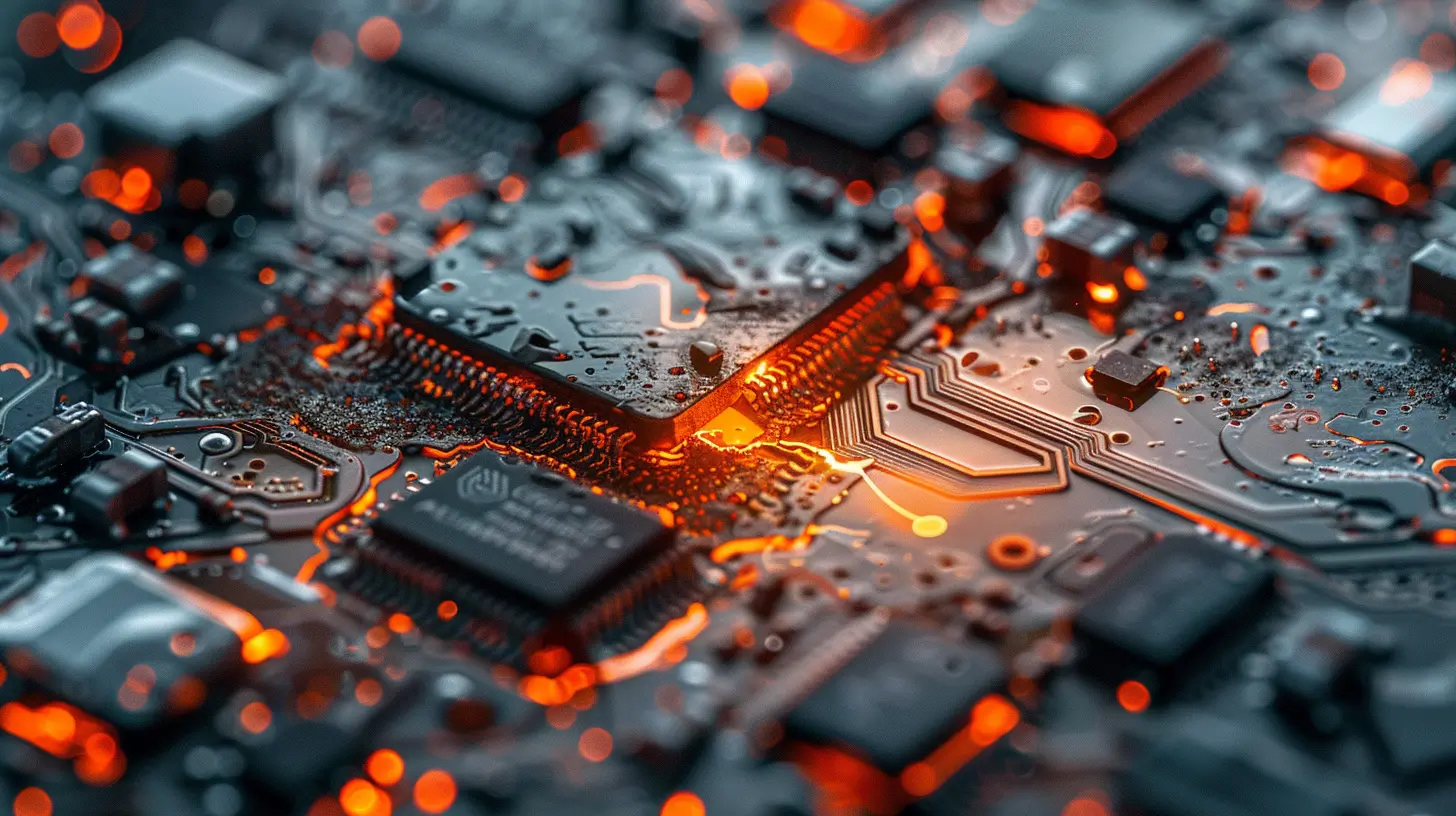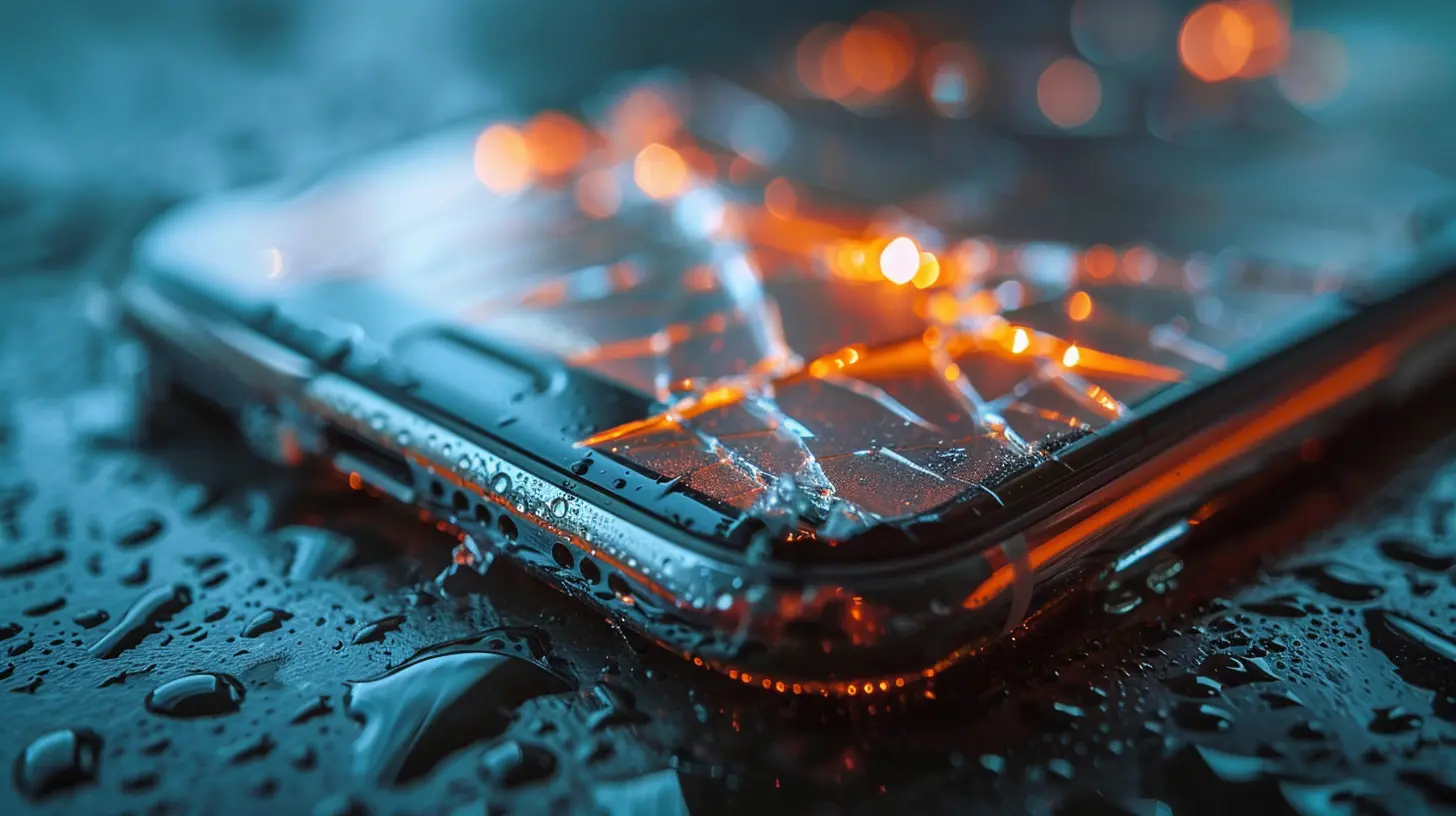How Self-Healing Materials Could Transform Tech Durability
27 June 2025
Imagine dropping your phone, cringing as you watch it clatter to the ground, only to pick it up and find that the cracks are already disappearing. Sounds like science fiction, right? Well, with the rise of self-healing materials, this could soon become a reality. But how exactly do these materials work, and what does this mean for the future of tech durability? In this article, we’ll explore the fascinating world of self-healing materials and how they could completely change the way we think about our gadgets.

What Are Self-Healing Materials?
Let’s start with the basics. Self-healing materials are exactly what they sound like—materials that can repair themselves after being damaged. Just like how your skin can heal from a cut, these materials can "heal" without human intervention. They come in various forms, from polymers and composites to metals and ceramics. And while this technology is still in its early stages, its potential is huge.How Do They Work?
Now, you might be wondering, how can a material "heal" itself? It’s not magic, although it might feel like it. The key lies in chemistry. Some self-healing materials contain microcapsules filled with a healing agent, like a resin. When the material is damaged, these microcapsules break open, releasing the agent, which then hardens and fills in the cracks.Other types of self-healing materials rely on reversible chemical bonds. When broken, these bonds can reform under certain conditions, such as exposure to heat or light. Think of it like a zipper that can close itself back up after being pulled apart.
Types of Self-Healing Mechanisms
There are several ways that self-healing materials can repair themselves, depending on the type of damage and the material used. Here are a few common mechanisms:- Intrinsic Healing: This involves materials that naturally have the ability to heal themselves. These materials have reversible chemical bonds, which can reform after breaking, making them capable of self-repair multiple times.
- Extrinsic Healing: In this case, a healing agent (like the microcapsules mentioned earlier) is incorporated into the material. When damaged, the agent is released, filling in the cracks. This is more of a one-time fix, as the healing agent is depleted after use.
- Thermally Activated Healing: Some materials can repair themselves when exposed to heat. The heat causes the molecules to move and rearrange, effectively "melting" the material back together.
- Light-Activated Healing: Similar to thermal healing, but instead of heat, light is used to trigger the healing process.

Why Do We Need Self-Healing Materials in Tech?
Let’s be honest: technology isn’t cheap. Whether it’s your smartphone, laptop, or smartwatch, these devices cost a pretty penny. And yet, they’re also frustratingly fragile. A single drop or scratch can render them useless or, at the very least, significantly decrease their lifespan. This is where self-healing materials come in.The Cost of Repairs
We’ve all been there. You accidentally drop your phone, and suddenly you’re looking at hundreds of dollars in repair costs. Even with protective cases, screens crack, and bodies dent. The current solution? Buy a new device or pay for expensive repairs. Neither option is ideal, especially considering the environmental impact of constantly manufacturing new gadgets.Self-healing materials could change this dynamic altogether. They would allow devices to recover from minor and even moderate damage without the need for repairs. No more cracked screens, no more scratched cases—just a device that can take care of itself.
Extending the Lifespan of Devices
Tech products have notoriously short lifespans. Every year, a new model is released, and many of us feel the pressure to upgrade. But what if our devices lasted longer? Self-healing materials could help extend the lifespan of gadgets, reducing the need for constant replacements. This would not only save consumers money but also help reduce electronic waste, which is a growing environmental concern.Reducing E-Waste
Speaking of e-waste, did you know that the world produces over 50 million tons of electronic waste every year? That’s a staggering amount, and much of it could be avoided if our devices were more durable. Self-healing materials could help address this issue by making tech products more resilient to wear and tear, meaning fewer broken devices ending up in landfills.
Applications of Self-Healing Materials in Tech
So, how exactly could self-healing materials be used in the tech world? While we’re still in the early stages of this technology, there are several exciting applications already being explored.Smartphones and Tablets
The most obvious application of self-healing materials is in smartphones and tablets. Imagine a phone with a self-healing screen that can recover from scratches and cracks. No more need for those bulky screen protectors or expensive repairs. Motorola has already filed a patent for a phone with a self-healing screen, so this technology could be closer than you think.Wearable Tech
Wearable tech, like smartwatches and fitness trackers, is another area that could benefit from self-healing materials. These devices are often exposed to more wear and tear than our other gadgets, especially if you’re using them during workouts or outdoor activities. A self-healing band or screen would make these devices much more durable and long-lasting.Laptops and Tablets
Laptops and tablets are also prone to damage, especially if you’re someone who’s always on the go. A laptop with a self-healing body or screen could withstand the bumps and bruises of daily use. Plus, it would be a game-changer for the ultra-thin, lightweight laptops that are increasingly popular but often fragile.Charging Cables and Accessories
How many times have you had to replace a charging cable because it frayed or stopped working? Self-healing materials could also be used in cables and other accessories, making them more durable and less prone to wear. No more fiddling with a half-broken cable that only works if you hold it at the right angle!Flexible Electronics
As flexible electronics become more common, self-healing materials will play a crucial role in maintaining their durability. Flexible screens and components are more prone to damage, making self-healing properties essential for their long-term viability.
Challenges Facing Self-Healing Materials
While the potential of self-healing materials is exciting, there are still several challenges that need to be addressed before this technology becomes mainstream.Cost
One of the biggest hurdles is cost. Developing self-healing materials is expensive, and incorporating them into consumer tech products could drive up prices. However, as the technology matures and becomes more widespread, these costs are expected to come down.Efficiency
Another challenge is efficiency. While some self-healing materials can repair minor damage, they’re not yet capable of fixing more significant issues. For example, a phone screen might be able to heal from small scratches, but a major crack could still require a full replacement. Researchers are working on improving the capabilities of these materials, but we’re not quite there yet.Longevity
How many times can self-healing materials repair themselves? In some cases, the healing process can only be triggered a few times before the material’s ability to self-repair is depleted. This is another area that needs improvement before the technology can be fully integrated into consumer tech.The Future of Self-Healing Materials in Tech
Despite these challenges, the future looks bright for self-healing materials. As research continues, we can expect to see more durable, longer-lasting tech products hit the market. And while it might be a few years before we’re all walking around with self-healing smartphones, the groundwork is already being laid.Paving the Way for Smarter, More Sustainable Tech
As our devices become smarter, it only makes sense that they become more resilient as well. Self-healing materials are just one piece of the puzzle in creating more sustainable, durable tech products. By reducing the need for repairs and replacements, these materials could help cut down on e-waste and make our gadgets last longer.A World Where Tech Heals Itself
Ultimately, the goal is to create a world where our devices can take care of themselves. Imagine never having to worry about dropping your phone or scratching your laptop. Self-healing materials could revolutionize the way we interact with technology, making it more durable, sustainable, and user-friendly.
Conclusion
Self-healing materials have the potential to transform tech durability in ways we’re only beginning to understand. From scratch-resistant phone screens to self-repairing laptops, this technology could make our devices smarter, more resilient, and better for the planet. While there are still challenges to overcome, the future of self-healing materials looks incredibly promising. Who knows? In a few years, we might all be carrying around gadgets that can heal themselves—no band-aids required.all images in this post were generated using AI tools
Category:
Technology InnovationAuthor:

Adeline Taylor
Discussion
rate this article
2 comments
Benjamin Oliver
Exciting times ahead! Self-healing materials could revolutionize tech durability, making our gadgets stronger and longer-lasting. Future looks bright!
November 13, 2025 at 1:31 PM

Adeline Taylor
Absolutely! Self-healing materials have the potential to significantly enhance durability and longevity in technology, paving the way for more resilient gadgets. The future indeed looks promising!
Buzz Nguyen
This is fascinating! The potential of self-healing materials to revolutionize tech durability raises so many questions. How do these materials respond to different types of damage? Can they be integrated into existing devices easily? I'm curious about the long-term implications for sustainability and repairability in the tech industry. Exciting times ahead!
July 7, 2025 at 3:56 AM

Adeline Taylor
Thank you for your insightful comment! Self-healing materials can respond to various damage types, often autonomously repairing minor cracks or scratches. Integration into existing devices is progressing, with researchers exploring compatibility. The long-term implications for sustainability and repairability are indeed promising, as these materials can extend product lifespans and reduce waste. Exciting times indeed!


